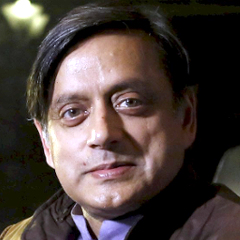When Nehru's successor, Lal Bahadur Shastri, died at the age of 62 of a sudden heart attack after peace talks with Pakistan in Tashkent in 1966, the Congress party stalwarts known as the 'Syndicate' picked her as someone who enjoyed national recognition but could be counted upon to take instructions from the party.
They mistakenly saw her as a 'gungi gudiya'* or 'dumb doll.' Initially, Indira, inarticulate and tentative, over-reliant on advisers of dubious competence, stumbled badly in office. The party paid the price in the elections of 1967, losing seats around the country, and seeing motley opposition governments come to power in several states.
On the brink of the abyss, Indira fought back. Sidelining the Syndicate, finding allies among socialists and ex-Communists, she engineered a split in the Congress in 1969 on ideological grounds. Having established a populist image and expelled the old bosses, she led her wing of the Congress to a resounding victory in 1971, campaigning on the slogan 'Garibi Hatao' (remove poverty).
The next phase of Indira Gandhi’s success begins with the 1971 War of Liberation in Bangladesh, which India won under her leadership. She travelled the world and campaigned relentlessly to put an end to the genocide Pakistan had unleashed in East Bengal, and gave refuge to 10 million victims flowing in from across the border, the greatest refugee influx in the history of humanity. When push came to shove, the prime minister fought a war that was imposed upon her, in adverse geopolitical circumstances, and prevailed.
She was a leader who held her own and refused to be bullied; she protected innocent East Bengalis who were being butchered by the Pakistani military, while protecting and promoting India’s national interests at the same time.
Mrs. Gandhi’s popularity soared; she had reinvented her party, upstaged the older generation of political leaders, and won a decisive war against the country that had, in 1947, vivisected the motherland. India's leading modern painter M.F. Husain depicted her as Durga. The imagery was appropriate: indeed, at her peak, Indira Gandhi was both worshipped and maternalized.
On the negative side was the Emergency, which Mrs. Gandhi proclaimed in 1975 and sustained for 22 months. Mrs. Gandhi herself regretted and apologized for the excesses of the Emergency but not for her decision to impose it. She called elections in the end, lost and quietly surrendered the reins; she had flirted with autocracy for twenty-two months, but she was ultimately the daughter of the man who had done more than anyone to entrench democracy in India.
* (Indira Gandhi was called 'gungi gudiya' for the first time by former Madhya Pradesh chief minister Dwarka Prasad Mishra (former National Security Adviser Brajesh Mishra's father) after she was elected Congress's parliamentary leader in 1966.)
Read more: Columns | Straight Talk

























 Indira Gandhi
Indira Gandhi